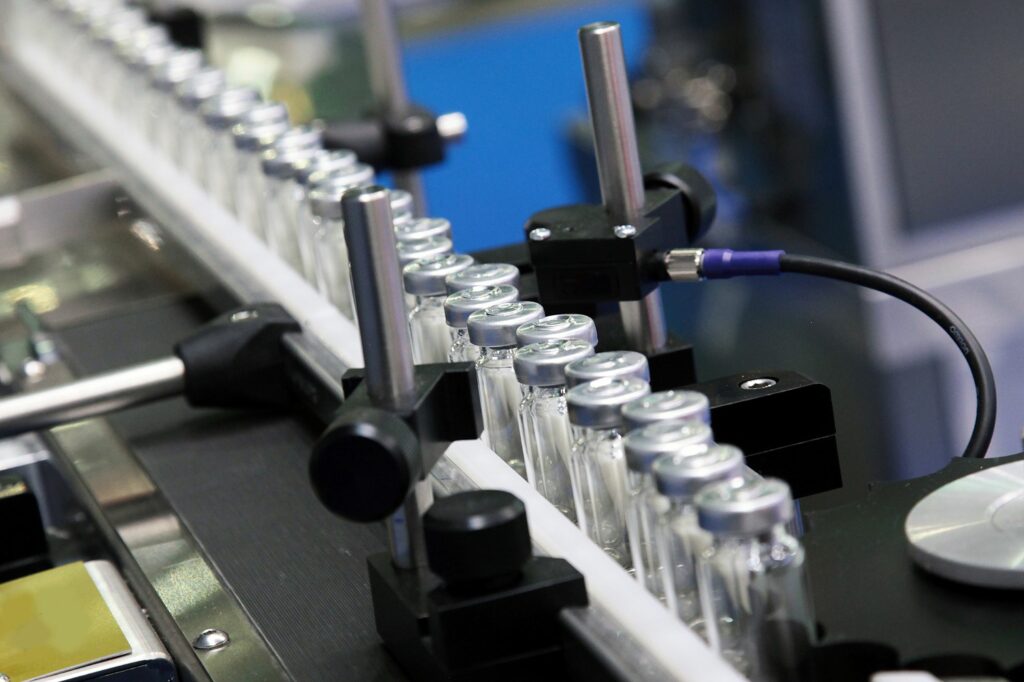Throughout the supply chain’s life cycle, pharmaceuticals or pharma goods are transmitted through several units, from the manufacturer to the intermediate stakeholders, such as distributors, logistics, pharmacies, and hospitals and to the consumers or the end-users. The manufacturer is required to produce pharmaceutical products in compliance with the set standards and ensure that these products are adequately packed and correctly labeled. Labels must contain, among others, a brief description and the composition of the product and the date of manufacture and its expiration. These pharmaceutical products will then be transported to distributors or logistic companies, who will, in turn, distribute to retail pharmacies and hospitals where consumers may buy from. In every stage of the supply chain, these pharmaceuticals or pharma goods may be exposed to forgery or counterfeiting.
Related Article: Blockchain: Anti-Counterfeit Technology in Pharmaceutical Industry
Counterfeited Pharmaceuticals and Pharma Goods and Blockchain
According to the WHO, a counterfeit drug is one that has been purposefully and fraudulently mislabeled affecting its identity or source. The introduction of counterfeit drugs occurs mostly during the transmission between supply chain partners, as there is no adequate surveillance or monitoring system in place to prevent this.
To bring an end to drug forgery and counterfeiting, blockchain technology was deemed the most ideal solution. Blockchain enables a rapid tracking strategy for supply chain information. This information is recorded in the same order as the transactions occur. As a result, it resembles a database that can only be appended to, and every transaction is recorded. Blockchain acts as a data pool from which data can be searched and monitored. Because it is decentralized, meaning, the control over the ledger is not vested to a single person or entity, it is highly fault-tolerant and reliable. This means that every transfer is documented and saved in the ledger without the possibility of altering.
How does it work?
To give a better view of how Blockchain works in the drug supply chain. Here is a simple illustration.
Stage 1. In the production stage, a bar code is assigned to the pharmaceutical products. This bar code contains, among others, a brief description and the composition of the drug, the date of manufacture, and the expiration date. This information is stored in the Blockchain, and a reference number is assigned to it.
When the pharmaceutical products are being transported, the temperature of the cargo containing the same and all the places it passed through including its current location is sent to the Blockchain and is appended to the same reference number. This allows stakeholders and even the government to track and trace the pharma products.
Stage 2. Upon reaching the logistics or distributors, the pharmaceutical’s bar code may be scanned to check its origin, including information initially stored by the manufacturer and information stored during its transfer. After reviewing and validating the pharma products, the distributors or logistics will sign digitally. It would signify that the products were received, and their legitimacy was checked. This transaction will be added to the Blockchain under the same reference number.
Stage 3. At this stage, the pharma products have reached retail pharmacies and hospitals. By scanning the same bar code, these retail pharmacies and hospitals may track and authenticate these pharma products. This bar code should include the information from the manufacturer, transfer, and the verification from the logistics or distributors. If some information is missing, added, modified, or has a different reference number, the drugs may be considered counterfeit due to the false information added in the data of the drugs.
Stage 4. The final stage is when the products reach the end-users. These end-users may scan the bar code using their mobile phone, and all information stored in the Blockchain will be visible to them.
From the above-cited illustration, everyone in the supply chain, from the logistics or distributors to the end-users, can track and trace and check the legitimacy of the pharma products. This technology promotes full transparency and easy traceability.
Conclusion
Blockchain operates in the same way as a peer-to-peer network, with all participants sharing immutable data in full transparency. One significant advantage of Blockchain technology for the pharmaceutical supply chain is that it enables all parties to verify the legitimacy of transactions kept in the ledger. As a result, this technology can undoubtedly assist in preventing the entry of counterfeit medications or drugs sent from unauthorized sources into the pharmaceutical supply chain.
References:
https://ijarcce.com/wp-content/uploads/2021/07/IJARCCE.2021.10707.pdf
https://www.leewayhertz.com/blockchain-in-pharma-supply-chain/
Visit IDlogic to learn more about the most advanced anti-counterfeiting solutions.
IDLogiq is made up of a team of deeply committed, with multidisciplinary professionals, which includes healthcare specialists, DSCSA and supply chain experts, advanced security technologists, and more. The team comes together to create a technological and trusted solution to supply chain. IDLogiq’s core mission of helping enterprises combat against counterfeiting all over the world to resolve $1.8 Trillion and 1 million lives lost per year and counting.
IDLogiq team envisions a world free of counterfeit drugs and a global environment working together to optimize business efficiency, maximize business intelligence via the application of our state-of-the-art IDLogiq technology.


